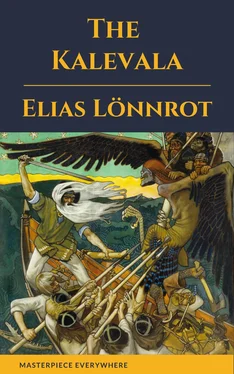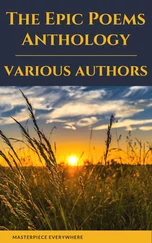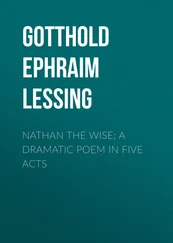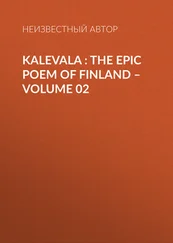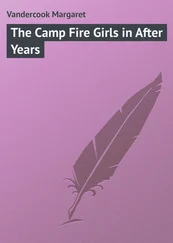Table of Contents
The Kalevala The Kalevala Elias Lönnrot (Translator: John Martin Crawford) Published: 1888 Categorie(s): Fiction, Poetry
Elias Lönnrot
Preface
Proem
Rune I. Birth of Wainamoinen.
Rune II. Wainamoinen's Sowing.
Rune III. Wainamoinen and Youkahainen.
Rune IV. The Fate of Aino.
Rune V. Wainamoinen's Lamentation.
Rune VI. Wainamoinen's Hapless Journey.
Rune VII. Wainamoinen's Rescue.
Rune VIII. Maiden of the Rainbow.
Rune IX. Origin of Iron.
Rune X. Ilmarinen Forges the Sampo.
Rune XI. Lemminkainen's Lament.
Rune XII. Kyllikki's Broken Vow.
Rune XIII. Lemminikainen's Second Wooing.
Rune XIV. Death of Lemminkainen.
Rune XV. Lemminkainen's Restoration.
Rune XVI. Wainamoinen's Boat-building.
Rune XVII. Wainamoinen Finds the Lost-word.
Rune XVIII. The Rival Suitors.
Rune XIX. Ilmarinen's Wooing.
Rune XX. The Brewing of Beer.
Rune XXI. Ilmarinen's Wedding-feast.
Rune XXII. The Bride's Farewell.
Rune XXIII. Osmotar the Bride-adviser
Rune XXIV. The Bride's Farewell.
Rune XXV. Wainamoinen's Wedding-songs.
Rune XXVI. Origin of the Serpent.
Rune XXVII. The Unwelcome Guest.
Rune XXVIII. The Mother's Counsel
Rune XXIX. The Isle of Refuge.
Rune XXX. The Frost-fiend.
Rune XXXI. Kullerwoinen Son of Evil.
Rune XXXII. Kullervo As A Sheperd.
Rune XXXIII. Kullervo and the Cheat-cake.
Rune XXXIV. Kullervo Finds His Tribe-folk.
Rune XXXV. Kullervo's Evil Deeds.
Rune XXXVI. Kullerwoinen's Victory and Death.
Rune XXXVII. Ilmarinen's Bride of Gold.
Rune XXXVIII. Ilmarinen's Fruitless Wooing.
Rune XXXIX. Wainamoinen's Sailing.
Rune XL. Birth of the Harp.
Rune XLI. Wainamoinen's Harp-songs.
Rune XLII. Capture of the Sampo.
Rune XLIII. The Sampo Lost In the Sea.
Rune XLIV. Birth of the Second Harp.
Rune XLV. Birth of the Nine Diseases
Rune XLVI. Otso the Honey-eater.
Rune XLVII. Louhi Steals Sun, Moon, and Fire.
Rune XLVIII. Capture of the Fire-fish.
Rune XLIX. Restoration of the Sun and Moon.
Rune L. Mariatta--Wainamoinen's Departure.
Epilogue
The Kalevala
Elias Lönnrot
(Translator: John Martin Crawford)
Published:1888 Categorie(s):Fiction, Poetry
THE following translation was undertaken from a desire to lay before the English-speaking people the full treasury of epical beauty, folklore, and mythology comprised in The Kalevala , the national epic of the Finns. A brief description of this peculiar people, and of their ethical, linguistic, social, and religious life, seems to be called for here in order that the following poem may be the better understood.
Finland (Finnish, Suomi or Suomenmaa , the swampy region, of which Finland, or Fen-land is said to be a Swedish translation,) is at present a Grand-Duchy in the north-western part of the Russian empire, bordering on Olenetz, Archangel, Sweden, Norway, and the Baltic Sea, its area being more than 144,000 square miles, and inhabited by some 2,000,000 of people, the last remnants of a race driven back from the East, at a very early day, by advancing tribes. The Finlanders live in a land of marshes and mountains, lakes and rivers, seas, gulfs, islands, and inlets, and they call themselves Suomilainen , Fen-dwellers. The climate is more severe than that of Sweden. The mean yearly temperature in the north is about 270ºF., and about 38ºF., at Helsingfors, the capital of Finland. In the southern districts the winter is seven months long, and in the northern provinces the sun disappears entirely during the months of December and January.
The inhabitants are strong and hardy, with bright, intelligent faces, high cheek-bones, yellow hair in early life, and with brown hair in mature age. With regard to their social habits, morals, and manners, all travellers are unanimous in speaking well of them. Their temper is universally mild; they are slow to anger, and when angry they keep silence. They are happy-hearted, affectionate to one another, and honorable and honest in their dealings with strangers. They are a cleanly people, being much given to the use of vapor-baths. This trait is a conspicuous note of their character from their earliest history to the present day. Often in the runes of The Kalevala reference is made to the "cleansing and healing virtues of the vapors of the heated bathroom."
The skull of the Finn belongs to the brachycephalic (short-headed) class of Retzius. Indeed the Finn-organization has generally been regarded as Mongol, though Mongol of a modified type. His color is swarthy, and his eyes are gray. He is not inhospitable, but not over-easy of access; nor is he a friend of new fashions. Steady, careful, laborious, he is valuable in the mine, valuable in the field, valuable oil shipboard, and, withal, a brave soldier on land.
The Finns are a very ancient people. It is claimed, too, that they began earlier than any other European nation to collect and preserve their ancient folk-lore. Tacitus, writing in the very beginning of the second century of the Christian era, mentions the Fenni, as he calls them, in the 46th chapter of his De Moribus Germanoram . He says of them: "The Finns are extremely wild, and live in abject poverty. They have no arms, no horses, no dwellings; they live on herbs, they clothe themselves in skins, and they sleep on the ground. Their only resources are their arrows, which for the lack of iron are tipped with bone." Strabo and the great geographer, Ptolemy, also mention this curious people. There is evidence that at one time they were spread over large portions of Europe and western Asia.
Perhaps it should be stated here that the copper, so often mentioned in The Kalevala , when taken literally, was probably bronze, or "hardened copper," the amount and quality of the alloy used being not now known. The prehistoric races of Europe were acquainted with bronze implements.
It may be interesting to note in this connection that Canon Isaac Taylor, and Professor Sayce have but very recently awakened great interest in this question, in Europe especially, by the reading of papers before the British Philological Association, in which they argue in favor of the Finnic origin of the Aryans. For this new theory these scholars present exceedingly strong evidence, and they conclude that the time of the separation of the Aryan from the Finnic stock must have been more than five thousand years ago.
The Finnish nation has one of the most sonorous and flexible of languages. Of the cultivated tongues of Europe, the Magyar, or Hungarian, bears the most positive signs of a deep-rooted similarity to the Finnish. Both belong to the Ugrian stock of agglutinative languages, i.e., those which preserve the root most carefully, and effect all changes of grammar by suffixes attached to the original stein. Grimin has shown that both Gothic and Icelandic present traces of Finnish influence.
The musical element of a language, the vowels, are well developed in Finnish, and their due sequence is subject to strict rules of euphony. The dotted ö ; (equivalent to the French eu) of the first syllable must be followed by an e or an i . The Finnish, like all Ugrian tongues, admits rhyme, but with reluctance, and prefers alliteration. Their alphabet consists of but nineteen letters, and of these, b , c , d , f , g , are found only in a few foreign words, and many others are never found initial.
One of the characteristic features of this language, and one that is likewise characteristic of the Magyar, Turkish, Mordvin, and other kindred tongues, consists in the frequent use of endearing diminutives.
Читать дальше
